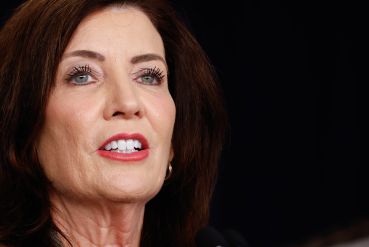
For eight months, the primary focal points of my columns have been the “current” attractiveness of long-term borrowing rates, and my concern that the days of low rates are numbered. My last column, in April 2010, quoted and agreed with a New York Times article that forecast an “inevitable rise” in index rates, although neither it nor I gave a prediction of when that rise would begin.
Since that article, 10-year treasury rates have dropped almost 100 basis points, and long-term mortgage rates have dropped to the lowest in my career. While the factors that would contribute to a sustained rise in index rates remain firmly in place, two weeks ago the 10-year treasury sank well below 3 percent, and the 30-year went well below 4 percent. Furthermore, while many lenders have reacted by including floor rates in their proposals, the reality is that when faced with competitive offers, floors are either being removed or dropping to the level at which the rate would be if locked on that day.
Never have the stakes been higher with regard to the potential opportunity cost of a delay in moving to secure a long-term refinancing.
In addition, the new availability/willingness of lenders to provide 20-year-and-longer fixed-rate terms has further enhanced the potential benefits for borrowers. In the early 1980s, interest rates on government-insured CDs and U.S. treasuries rose to more than 17 percent. It is easy to look back now, with the benefit of hindsight, and wonder why more investors didn’t plow every dollar of liquidity into the longest possible CD or treasury at that point, and enjoy those outsize “no-risk” returns for years to come.
I firmly believe that today’s borrowing rates represent a parallel opportunity upon which wistful borrowers will look back for a generation.
Long-term treasury rates this low would seem to be sustainable only within the context of a prolonged recession or even depression; and in the face of a prolonged downturn, one must question how long the lending community’s aggressive competitiveness will remain in place-leading to a potential rise in spreads and a decrease in the overall supply of debt capital. Alternatively, should a prolonged “double-dip” downturn hopefully be avoided, index rates will rise and the opportunity to borrow for so long at such a low cost will have been lost.
TODAY’S EXTREME AGGRESSIVENESS may be due primarily to the combination of the rise in lender allocations for 2010 and the virtual disappearance of borrower demand for money between January 2009 and March 2010. Regardless of the cause or sustainability, the current ability to lock into very long-term low-cost mortgages right now is absolutely a reality.
A few weeks ago (before the major drop in treasury rates), one of our clients locked the rate on an ultra low-leverage 10-year interest-only mortgage on a major Plaza district office building at 4.85 percent. While that rate was dramatically lower than expected at that point, it could be explained in large part by the extraordinarily low leverage (approximately 20 percent loan to value).
However, last week we reached the end of the marketing process for a low-/moderate-leverage (50 to 60 percent) loan on another midtown office building, and the results have also been remarkably strong for the borrower. We sought only 20-year proposals, and a variety of loan amounts and creative loan structures were offered, with interest rates ranging as low as almost 4.75 percent for 20 years. It is clear that the lending community has made the prudent decision that yield rather than leverage level is the arena of choice for strong competition in 2010.
While this means that the days of low-cost high-leverage debt have not returned, a true golden age for low-to-moderate-leverage long-term borrowers has been ushered in. Although the extraordinarily low short-term indexes will super-size prepayment penalties on existing loans, the current availability of 20-year-and-longer fixed-rate loans on commercial properties seems to make this a unique time for long-term holders.
The two traditional (and typically opposing) reasons for refinancing early are to either take out more proceeds or to reduce debt service payments. With the current availability of ultra-long-term fixed-rate loans in an eventually inflationary environment, a third compelling reason has been added to this mix. The ability to rate-lock a new loan for 20 years or longer affords a borrower the opportunity to amortize the cost of a prepayment penalty over a longer period, which reduces the penalty’s effect on the overall cost of the new money.
This also takes short- or even moderate-term market predictions out of the mix-which may be quite attractive to long-term holders, especially in a situation where the new 20-year-plus borrowing cost is fixed at a rate (such as under 5 percent) that, from a historical perspective, would be attractive even for a short-term loan.
scottsinger@singerbassuk.com
Scott A. Singer is principal of the Singer & Bassuk Organization LLC and a member of REBNY’s Finance Committee. He writes monthly for The Commercial Observer about real estate finance.


